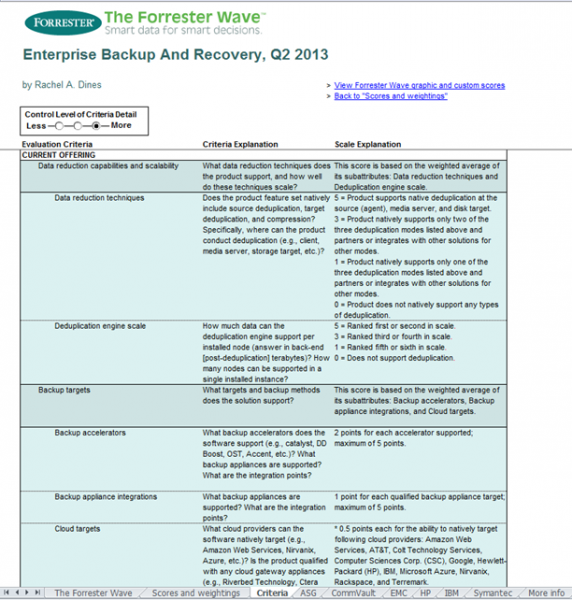Backup Data Growth Is Out Of Control, Make Sure You Have The Right Tool To Manage It!
Have you heard the big news? Data is growing at an insane pace. Ok ok, this isn't really news, I hear this almost every day. But what many people don't realize is that one of the guiltiest culprits behind data growth is actually backup data. Between 2010 and 2012, the average enterprise server backup data store grew by 42%, while file storage (which is often the scapegoat of data growth) grew by 28%. And with more and more mobile workers, it's no surprise that PC backup storage is also growing at an explosive rate, almost 100% over the past two years.
Backup data growth being what it is, it's no surprise that a lot of people are re-evaluating their enterprise backup software. That's why I recently embarked on Forrester's first Wave on Enterprise Backup and Recovery Software. As part of that report, I developed a list of key criteria that are necessary to evaluate your backup and recovery software. At a high level, here is what I came up with:
Product offering:
- Data reduction capabilities and scalability. What data reduction techniques does the product support, and how well do these techniques scale?
- Backup targets. What targets and backup methods does the solution support?
- Advanced backup options. What advanced backup options does the solution support?
- Encryption. What are the native backup encryption and encryption key management capabilities? What encryption solutions does the product integrate with?
- Platform support. What platforms does the solution support?
- Continuity and restore features. Does the product include continuous data protection (CDP), host-based replication, the ability to boot VMs from backup, ability to control replication on primary storage, differential restores, bare-metal recovery onto disparate hardware, etc.?
- Backup verification and error checking. What methods does the software use to check the recoverability of backups? Can the software leverage hardware targets for recovery verification?
- Complementary modules. What additional modules are available on the same platform (e.g., archive, endpoint backup, tiering, search/eDiscovery, etc.)?
- Manageability. How easy is it to deploy and manage the solution?
- Setup and implementation. How easy is it to set up and implement the solution?
- Scalability. How scalable is the solution within a single system?
Vendor strategy:
-
Corporate and product strategy. What is the vendor's strategy for this product?
-
Research and development. What R&D resources does the vendor allocate to this product?
-
Strategic partnerships. Who are the vendor's key technology partners pertaining to this product? Who are the vendor's key service provider partners pertaining to this product? Do they use the product as the basis for a service offering (e.g., backup-as-a-service, disaster-recovery-as-a-service, etc.)?
-
Cost. How much does this solution cost, and how is it licensed?
-
Customer satisfaction. How satisfied are its current customers? Are they likely to recommend the vendor to a peer?
These are the criteria that I used to evaluate the leading vendors in the enterprise backup and recovery software space, I encourage you to read the full report and download the detailed criteria spreadsheet and scoring to help you make informed decisions relating to you backup software purchases.
Preview of the detailed wave spreadsheet

